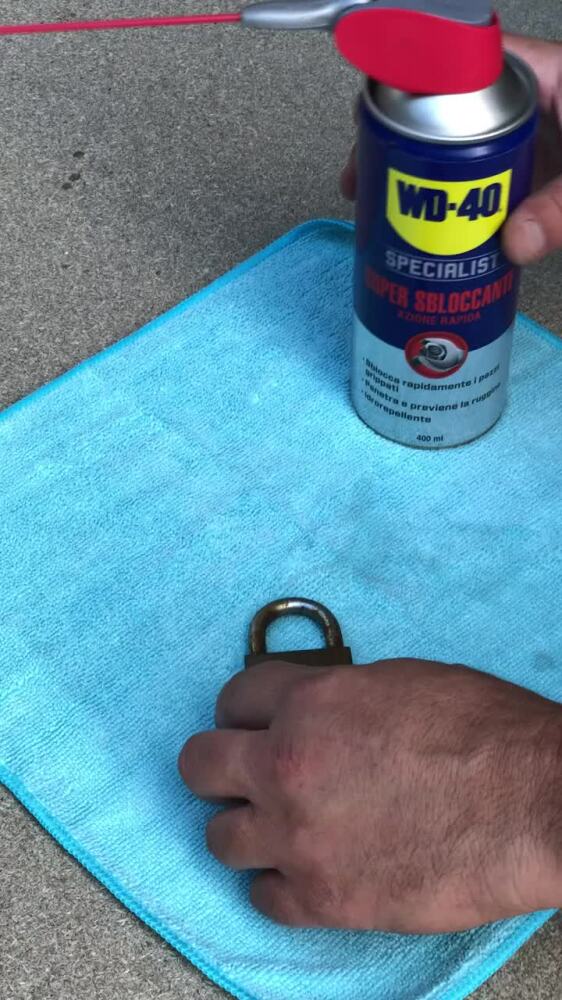Lick clean


This image shows a person spraying WD-40 Specialist on a padlock. WD-40 is commonly used for lubrication, rust prevention, and freeing stuck mechanisms.
---
Uses of WD-40 in This Project:
1. Helps open jammed locks – Loosens up internal pins and clears dust or rust.
2. Keeps the lock smooth – Lubricates the moving parts for easy key turning.
3. Prevents rust – Leaves a protective layer that keeps moisture and rust away.
---
Step-by-Step Instructions:
1. Spray WD-40 directly into the keyhole and on moving parts of the padlock.
2. Wait a few seconds to let the liquid penetrate inside.
3. Insert the key and gently turn it to free the mechanism.
4. If the lock is badly jammed, repeat the process 2–3 times.
5. Wipe the lock clean and dry to finish.
1. Removes Rust – Helps loosen rusted nuts, bolts, and metal parts.
2. Lubrication – Makes locks, hinges, chains, and tools move smoothly.
3. Moisture Protection – Protects metal surfaces from water and prevents corrosion.
4. Cleans Surfaces – Removes grease, grime, adhesives, and sticky residues.
5. Loosens Stuck Parts – Frees jammed mechanisms like padlocks, zippers, and screws.
6. Prevents Squeaking – Stops squeaky door hinges, wheels, and moving parts.
7. Protects Tools & Equipment – Extends the life of machinery and metal items.

